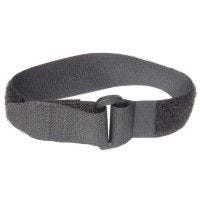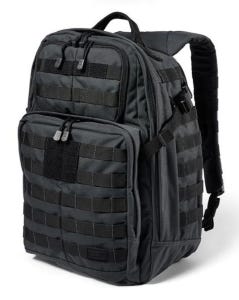The Whippet #167: Just trucking right along
Good morning!
A thing I continue to say even though I understand timezones!
Last issue I included an anecdote about a guy who got so overwhelmed by intense circumstances that he became incapable of solving the simple problem of "climb over 3-foot fence".
Reader Fraser told me pilots call this kind of shutdown 'helmet fire' (like, metaphorically their brain's caught fire). What I really liked was the idea of 'task saturation':
A complex procedure must be flown while making radio calls, changing the speed and configuration of the airplane, and maintaining assigned altitudes, all while flying by reference to instruments. When the sum of these tasks exceeds the pilot's capability to deal with them effectively, they becomes task saturated and unable to perform any one of the tasks proficiently.
The pilot may lose situational awareness, become confused, disoriented, may stammer on the radio, may forget how to fly the approach or what their last clearance was, and this can rapidly develop into an unsafe situation.
Also this:
A well-known mantra in dealing with any unexpected situation in an airplane is to "fly the airplane". This is a reminder that, under all circumstances, maintaining control of the aircraft supersedes all other tasks. Such deferral is no substitute for raw ability to perform multiple tasks, but provides an important lifeline in unexpected circumstances.
The second bit reminds me a bit of an anecdote about the Apollo missions, and the enormous amount of research and preparation and scenario-planning that went into it. Apparently they were circling and circling around getting ready to do it, and someone said, "if you want to fly to the moon, you're eventually going to have to fly to the moon."
Meaning, there's no way to do this without taking that one main risk - there's no amount of planning that will let you do it incrementally.
(Tim Clare tells this anecdote occasionally on his podcast -- if you want to write a book, you're eventually going to have to write a book -- so I probably don't have the phrasing exactly right.)
SPEAKING OF PODCASTS
I was a guest on Michael Bungay-Smith's podcast, in which you read from a book of your choice and then talk about the ideas in it, which is a neat format.
Before the interview guests have to undergo a terrible ordeal: choose one of the books that is most important to you, and then choose two pages that represent a key part of that book. Two pages! Two pages to try and convince people that the thing that matters most to your heart and self is worth caring about!
I couldn't hand the pressure of that so I just chose a book and an idea I've been obsessed with lately – the degree to which the science around the placebo/nocebo effect has developed. It is so much more all-encompassing than you imagine.
I've been reluctant to talk about it in The Whippet because it makes people really angry and there isn't space to do the idea justice. I'm not sure there was in the podcast either, but I did my best.
Anyway, MBS is a great interviewer, and asked questions I was surprised by, and brought up topics I didn't expect to get into. I also talk a bunch about editing and what makes a good editor, and also why lifting weights is good? It's broad-ranging!
Listen here or on podcast apps!
Flexibility has nothing to do with stretching your muscles; it's neurological
I mentioned how far-ranging the placebo effect is? Well, it's not correct to call this the placebo effect, but it ties in.
When you're under anaesthetic, you're incredibly flexible. That's because what stops you, say, touching your toes, isn't physically 'tight' hamstrings. It's a neurological reflex that inhibits you from moving as far as you're technically capable of. Because you don't spend much time at the end of your range of motion, your body doesn't trust you to go there safely, so it stops you short.
'Stretching' is really about getting to the end of your range of motion, then relaxing - teaching your body slowly, over time, that it's safe to be here. Stretching to the point of pain doesn't help, because that sends the opposite message.
Being well-supported in a stretch, being warm, and even having a partner's hands on you help, because those things feel safe. (If they feel safe to you.)
Strength training is actually very good for increasing flexibility, if you're going through your full range of motion. Strong = stable = safe = flexible. I've found weekly yoga + stretching to be more effective than just stretching alone at increasing flexibility, and I think it's because you're actually using that range of motion to hold weight - again, building your body's confidence in the end range.
Lastly I hate to say this, but it's just true: standard boring 'hold the stretch for 30 seconds' stretching is very effective. You just have to do it daily or almost daily for at least a month to see a noticeable effect. The reason people think that kind of stretching doesn't work is because it bores them so they don't do it every day for 2 months.
There are other, more complicated but less boring ways of increasing your flexibility, but the static stretching thing does do the job for pretty much everyone.
Why would I want to be flexible?
It's not super important when you're young? But as you become more sedentary due to desk jobs and such, there's a tonne of movements you just stop doing without realising it. And then 20 years go past and you discover you can't reach your arms over your head well enough to get stuff from an overhead locker, or bend down easily to pick something up off the floor.
You're also more likely to fall if, say, your ankle can't absorb some of the force of a twist.
And maybe you do jiujitsu or bouldering or something where more flexibility would let you do more kinds of moves.
So yeah, flexibility isn't good in itself the way strength and aerobic fitness are - it's more, like, what movements do you want to be able to do comfortably? Can you do them?
[the usual caveat that there is way more to this topic than I can get into – google "is stretching neurological" or something for more]
Okay, that was a lot of text, you're in the blue zone for sure
https://twitter.com/mind_probiotic/status/1638971159776575488?s=20
World Turtle
This is a common snapping turtle from the swamps of Maryland [US state on east coast]. Researchers put transmitters on all the turtles in the area to watch their migration routes.
The turtles follow the same path, year after year, from their summer stomping grounds to their winter hideouts — tight packed, underground mud-holes where they can wait out the cold weather.
"What we think is super cool is that these animals do use a particular mud-place, if you will, a wallow. And they return each year to the same exact spot, and by exact spot I mean to the centimeter," Krochmal told Live Science.
(This photo is actually taken mid-summer – all the other turtles had left, but she had elected to spend two weeks in the mud of a drief up lake bed. Researchers started to wonder if she had actually left with the other turtles and managed to remove her transmitter, so they went to go pick it up, which is when they saw her emerge.)
The turtle, Krochmal said, weighs about 13 pounds (6 kilograms), and the 10-inch-thick (25 centimeters) world on her back weighed about 18 pounds (8 kg). But she began her journey toward her winter mud hole with no obvious sign of additional effort.
"She was just trucking right along," he said.
Researchers don't know a) how they can stay under mud so long without oxygen or b) how they find the exact same spots in the mud each year.
But they're getting closer to the latter – they tried giving the turtles a drug that blocks the neurotransmitter acetylcholine, and the turtles immediately lost their sense of direction
"They just sort of wander in circles, as you might imagine, for about five or six hours until the drug wears off," Krochmal said. "Then they just sort of snap out of it, walk right back to their path, and continue along their path."
Accuracy vs reliability of measurement
This is an image I really like from a recent article by MacroFactor about why they don't rely on the calory trackers from wearables, FitBits and so on. (If you want to track/tweak your food intake, MacroFactor is uncontroversially the best app there is for it, like by a LOT. If you don't want to do that, it's useless to you, forget it.)
Their point is that something that is inaccurate, but reliably inaccurate can still be very useful – like a clock that's always 15 minutes behind. That clock is barely less useful than an accurate clock, once you know.
Wearables are neither accurate nor reliable when it comes to tracking calories burned – it's not better than nothing, because it's misinforming you. 'Nothing' would be better. Switch that feature off or hide it from your dashboard if you can.
Wearables aside, the diagram is just a neat visualisation of an idea that applies in a lot of places.
Comments section!
Leave a comment / Take a comment
These patches on backpacks are for tying stuff to!
They're called lashtabs (or 'pig snouts' because look at em) and you're meant to thread string through to tie stuff to your pack. For eg, dirty shoes:
You can thread a velcro cinch strap through and use it to hold a folded-up umbrella or a jacket you don't want taking up space in your bag
or get one of those magnetic hat clips
And you can buy lashtabs and sew them on your pack yourself if it doesn't come with any (they're not always diamond shaped).
"If lashtabs are so good, why don't they make the whole backpack out of lashtabs?" They sort of do, it's called MOLLE (pr. Molly: MOdular, Lightweight Load-carrying Equipment).
Thanks for reading!
✉️ If you've been forwarded this email, you can sign up for free here.
Ps before anyone yells at me, the webbing on the backpack is called PALS (Pouch Attachment Ladder System). The things you attach to PALS are called MOLLE. But casually everyone just calls the whole system MOLLE.
If you couldn't tell by looking at it that it originated with the military, the overuse of acronyms would be a dead giveaway
Originally published at https://thewhippet.org/167-just-trucking-right-along/



















